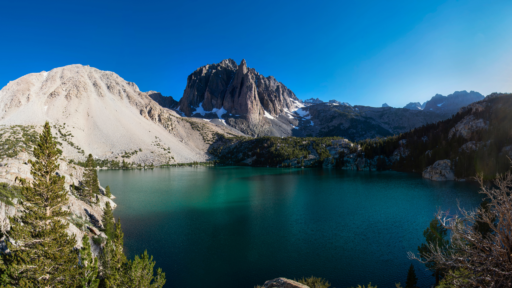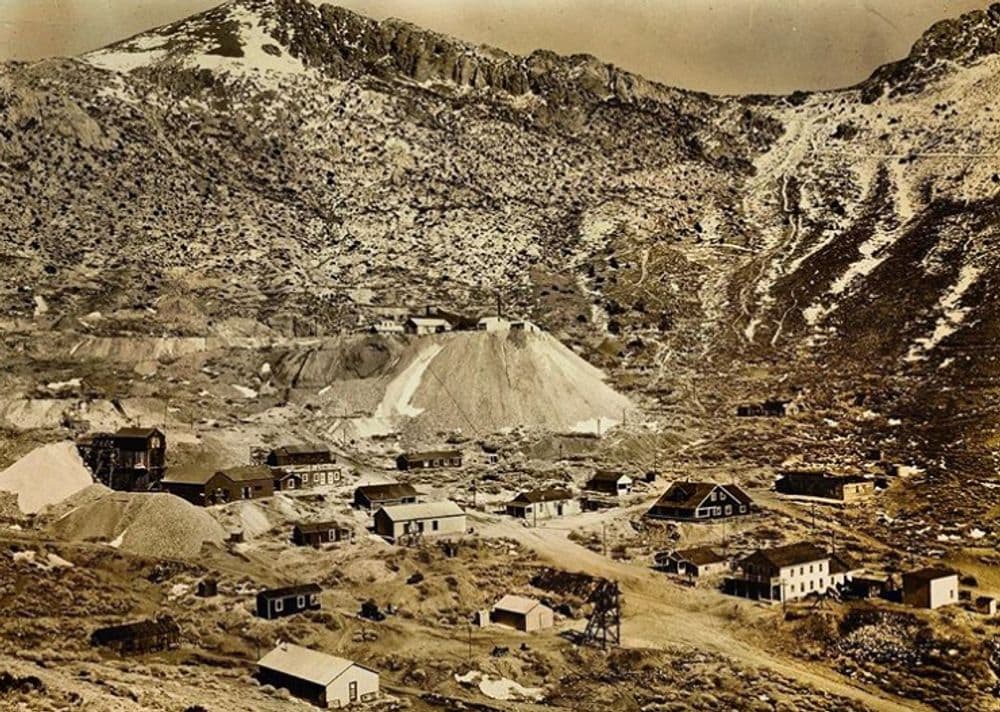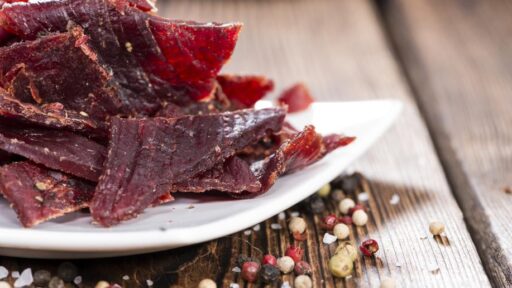Land Acknowledgment: Payahuunadu has been, and continues to be, the homeland of the Paiute (Nuumu), Shoshone (Newe), and Timbisha peoples. This land acknowledgment honors the original inhabitants of the Eastern Sierra and the tribes who remain here today.
Leave no Trace
It is paramount that you approach this hike with a “Leave no Trace” mindset meaning what you pack in, you pack out. Don’t leave traces of your lunch for wildlife, and leave your trash in town (purchase something from the business owner) vs dumping your trash at trailhead trashcans, as it makes the Forest Service jobs that much harder. Ensure that you camp on durable surfaces, camp 100’ away from a water sources, and don’t cut switchbacks. This list goes on and on, buy do what you can to be aware and not impact the environment or anyone else’s experience. Learn more on “Leave No Trace” principles here. Your actions matter: where you walk, how you park, how you treat locals, and even how loud you play your music. It all makes a difference. Search “Leave No Trace” to learn more about responsible recreation and how you can help protect the wild spaces we love and share.
Overview
Big Pine Lakes is one of the most iconic hikes in the Eastern Sierra, known for its stunning turquoise alpine lakes, dramatic granite peaks, and views of California’s southernmost glaciers. Nestled in the Big Pine Creek drainage below the Palisades, the trail to the lakes is a bucket list-worthy adventure for any hiker seeking high-elevation wonder without technical climbing.
The trail is popular, so go early, go midweek, or go prepared to share the views. It’s worth it. With multiple lakes to explore, you can tailor the distance to your group’s ability—just make sure to make it at least to Second Lake, the crown jewel of the chain.
Trail Beta
| Trailhead | Big Pine Creek Trailhead |
| Route | North Fork Big Pine Creek Trail |
| Mileage | 14.7 miles round trip |
| Elevation Start | 7,800 feet |
| Elevation Gain | 2,600 feet |
| High Point | 10,400 feet |
| Type | Out and Back |
| Difficulty | Moderate |
| Water Sources | Creek access along trail |
| Permit Needed | Overnight |
| Dog Friendly | Yes |
| Land Manager | Inyo National Forest |
Trail Description
The trail begins at Big Pine Creek Campground and quickly enters a shaded forest with the creek running beside you. After about a mile, you’ll reach the junction with the South Fork trail—stick to the North Fork to reach the lakes.
The next few miles are a steady uphill grind through forested switchbacks and open meadows. Along the way, you’ll pass historic Lon Chaney’s cabin (yes, the silent film star), a small but fascinating structure tucked into the woods. As you gain elevation, the views open up to reveal Temple Crag and other jagged peaks of the Palisades.
Lake 1 appears like a magical blue eye in the basin. From there, continue up to Lake 2 for the money shot—glacial melt gives the lake its brilliant, almost tropical color. You can stop here or push on to Lakes 3 through 7 if you want to make it a full-day epic.
Best Season to Hike
Late June through October. Snow can linger into early summer, and trails may be muddy or icy in shoulder seasons. Summer offers the clearest access and best colors—especially if you hit it during wildflower bloom. Fall brings golden aspens and crisp air.
Flora & Fauna
The trail transitions from pine and aspen forests to alpine scrub and glacial moraine. Keep an eye out for marmots, deer, and the occasional pika above tree line. Wildflowers like lupine, Indian paintbrush, and columbine flourish in July. Watch for bears near the campground—store food responsibly.
Geology
Big Pine Lakes sits in a glacially-carved canyon beneath the Palisade Glacier—the southernmost glacier in the U.S. This terrain was formed by repeated glacial advances and retreats, leaving behind steep walls, polished granite, and deep turquoise tarns filled by snowmelt.
History
This area is home to the Bishop Paiute Tribe and other Indigenous groups who have lived in the Owens Valley for thousands of years. The trail and surrounding wilderness were later explored by settlers and became popular during the golden era of Sierra mountaineering in the early 1900s.
Know Before You Go
• Altitude: The trail starts at 7,800 feet and climbs to nearly 10,500 feet. Acclimate if you’re coming from sea level.
• Weather: Afternoon thunderstorms are common in summer. Start early and be off the pass by midday. If you hear thunder and see lightning on an exposed trail, your immediate priority is to seek shelter and minimize your exposure to the storm. Get to a safe location, crouch low with your head down, and stay away from tall or conductive objects. If possible, try to find a valley or depression in the terrain.
• Water: Bring a filter or treatment tablets. Plenty of streams cross the trail.
• Bears: Food storage is required in the campground and recommended on trail.
• Dogs: Leashed dogs are allowed.
Driving Directions
From Big Pine, take Glacier Lodge Road west for 11 miles until it ends at the Big Pine Creek trailhead. It’s a paved but narrow road with steep drop-offs—drive carefully.
Parking
Free parking is available at the trailhead and overflow lots. Get there early—this is a high-traffic area during the summer months.
Leave No Trace
Please recreate responsibly. Stay on trail, pack out all trash, pick up after pets, and avoid trampling fragile alpine vegetation. Respect wildlife, other hikers, and Indigenous land.
#packitinpackitout #leaveitbetter #leavenotrace #camplikeapro
AWE Disclaimer:Recreation activities may involve inherent risks, including but not limited to changing weather conditions, challenging terrain, wildlife encounters, and other unforeseen hazards. Visitors should check with local land management agencies or authorities for up-to-date information on trail conditions, access, permits, and regulations before planning their trip. Always prioritize safety by being prepared, carrying adequate supplies, and following Leave No Trace principles to protect the environment. Respect local rules, private property, and other visitors. This post is for informational purposes only, and participation in any activity is at your own risk.






